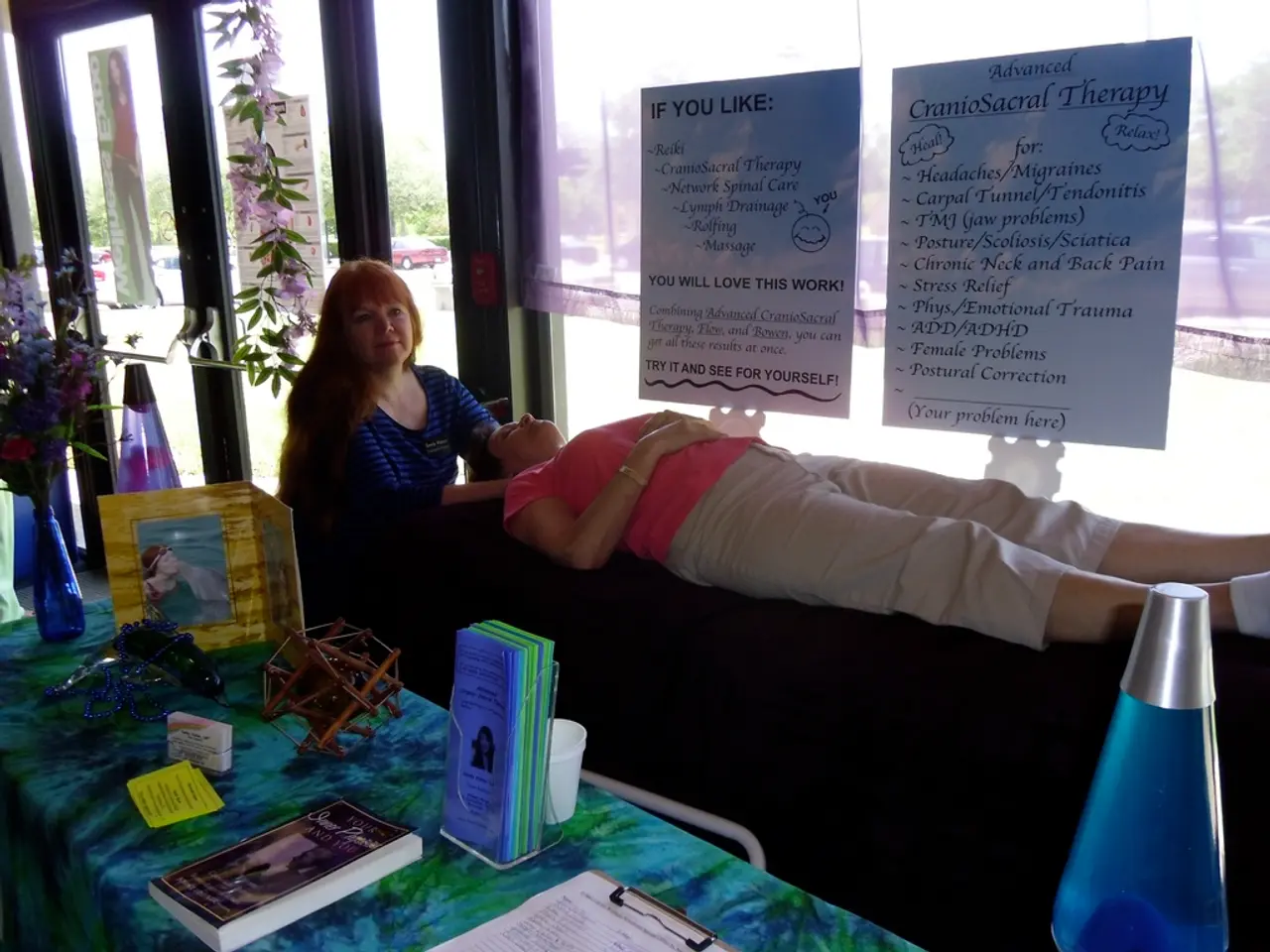Temporomandibular joint disorders: Remedies and Further Insights
Temporomandibular joint disorders (TMJD), also known as TMD, refer to pain and dysfunction in the joints or muscles surrounding the temporomandibular joint (TMJ). This joint, located on either side of the face, in front of the ears, connects the jawbone to the skull.
TMJD can present with various symptoms, such as jaw issues (popping or clicking sounds, locking), pain in the jaw, neck, shoulders, or face, difficulty opening the mouth wide, headaches, problems with the ears (ringing or earaches), vertigo, tooth pain, and other dental issues. The condition appears to be more common in females than males.
Common causes of TMJ disorders include teeth grinding or clenching (bruxism), jaw misalignment or malocclusion, trauma or injury to the jaw or head, arthritis affecting the joint, emotional stress, systemic diseases, and lifestyle factors such as poor diet and muscle tension.
Treatment Options for TMJD
Typical treatments for TMJ disorders emphasize non-surgical, conservative approaches initially. These include:
- Physical therapy: Jaw exercises to strengthen muscles, reduce tension, and improve joint mobility.
- Medications: Over-the-counter pain relievers and anti-inflammatory drugs to manage pain and swelling.
- Stress management: Relaxation techniques and counseling to reduce jaw clenching and muscle tension related to stress.
- Occlusal splints or bite guards: Custom dental appliances that prevent teeth grinding and alleviate joint strain.
- Dental adjustments: Correcting bite alignment to reduce joint stress.
- Lifestyle changes: Avoiding hard or chewy foods, maintaining proper hydration, and improving posture.
If these nonsurgical options do not sufficiently relieve symptoms, surgical interventions such as arthroscopy, open joint surgery, or joint replacement may be considered for severe or structural cases.
Home Remedies for TMJD
Home remedies often recommended to support symptom relief include applying warm compresses to relax muscles, eating soft foods, avoiding excessive jaw movements (like wide yawning or gum chewing), practicing gentle jaw stretches or massages, and managing stress through mindfulness or relaxation exercises.
Deep, conscious breathing and biofeedback can help relax tense muscles, which can ease tension-related TMJ pain. Adopting habits such as quitting chewing gum and cutting tension-related practices can help prevent TMJD.
It's worth noting that TMJ disorders affect more than 10 million Americans. Conservative treatments for TMJ disorders, such as oral splints or mouth guards, physical therapy, and counseling and stress management, are often recommended before considering surgery.
In many cases, patients experience improvement within weeks when using a combination of these conservative treatments, with full recovery potentially taking several months depending on severity and adherence to therapy.
Botulinum toxin (Botox) injections can help relieve pain from jaw muscle tension and reduce pain, tension headaches, and joint dysfunction resulting from TMJD. Direct corticosteroid injections into the affected joint can help reduce pain and inflammation in TMJD cases. Arthrocentesis is a surgical procedure that removes debris and inflammatory byproducts in the joint by rinsing the joint with fluid through tiny needles. Arthroscopy is a surgical procedure that uses a small thin tube to check, diagnose, and treat the cause of TMJD, including changing the position of the cartilage disc, improving joint surfaces, or treating scarring.
In conclusion, understanding TMJD and its causes, as well as the available treatment options, can help individuals manage this common condition effectively. A combination of conservative treatments, home remedies, and lifestyle changes can often lead to significant improvements in symptoms and quality of life.
- In addition to TMJD's many symptoms, psoriatic arthritis, a type of chronic disease affecting the musculoskeletal system, can also manifest as joint pain and inflammation, especially around the TMJ.
- The field of dentistry plays a crucial role in managing TMJ disorders, with therapies and treatments such as occlusal splints or bite guards custom-made by dentists to alleviate joint strain due to teeth grinding.
- Skin care professionals may notice signs of TMJD in their patients, as the chronic conditions often share similarities, such as stress-related symptoms and pain in the face and jaw region.
- Integrating workplace-wellness programs could help employees manage stress and address lifestyle factors like poor diet and muscle tension, which are linked to TMJD development.
- Medical-conditions like chronic kidney disease, depression, or anxiety may coexist with TMJD, warranting the consideration of mental-health care and nutrition counseling to promote overall health and wellness.
- Fitness and exercise play a pivotal role in maintaining joint health and alleviating symptoms of chronic diseases like arthritis that contribute to TMJD development.
- CBD, a compound derived from the cannabis plant, is being studied for its potential in relieving pain and reducing inflammation associated with TMJD and other related chronic diseases.
- Incorporating therapies such as relaxation techniques, deep breathing exercises, and stress management sessions into treatment plans can help individuals cope with mental stress, thereby addressing a potential cause of jaw clenching and tension, contributing to TMJD.




